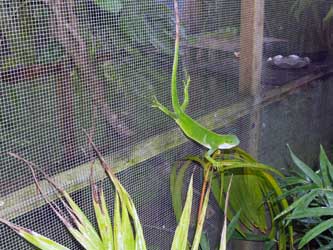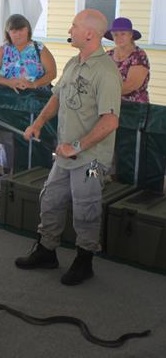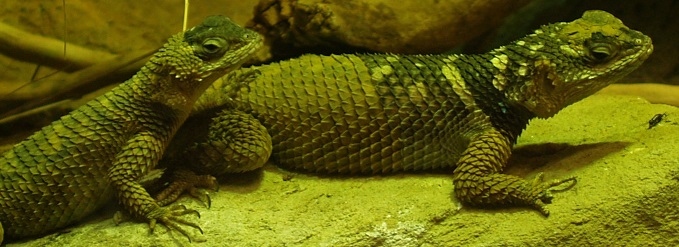Keeping these cold-blooded friends as pets

- Learn how to identify and understand the needs of reptiles and amphibians.
- Learn how to classy reptiles and amphibians.
- Understand the characteristics and environmental requirements of amphibians and reptiles.
- Study the ecology of amphibians and reptiles.
- Understand how to properly look after amphibians and reptiles as pets.
Course Duration: 100 hours of self paced study. Start at any time and study when you want.
COURSE STRUCTURE AND CONTENT
There are 9 lessons in this course, as outline below.
1. Introduction to Herpetology
- Herpetology Defined.
- Introduction to Reptiles.
- Animal Taxonomy.
- Classification of Reptiles.
- Characteristics of Reptiles.
- Testudine Characteristics (Turtles).
- Squamata Characteristics (Snakes and Lizards).
- Rhynchocephalia Characteristics (Tuatara).
- Classification of Amphibians.
- Amphibian Characteristics.
- Building Resources and Developing Networks.
- Terminology.
2. Class Reptilia (Reptiles)
- Reptile Classification.
- Water Conservation.
- Reproduction.
- Order Chelonia (Testudines); Turtles.
- Order Crocodilia; Crocodilians.
- Order Squamata.
- Scaled Reptiles; Lizards (Suborder Sauria) and Snakes (Suborder Serpentes).
3. Reptile Biology
- Reptile Anatomy.
- Skeleton.
- Scales and Skutes.
- Ectothermal Regulation.
- Coloration.
- Respiration and Metabolism.
- Food and Digestion.
- Senses.
- Locomotion.
4. Class Amphibia (Amphibians)
- Order Anura (Frogs and Toads).
- Order Apoda (Caecilians).
- Order Urodela (Salamanders and Newts).
5. Amphibian Biology
- Amphibian Skeleton.
- Skin.
- Ectothermal Regulation.
- Colouration.
- Respiration and Metabolism.
- Branchial.
- Buccopharyngeal.
- Cutaneous.
- Pulmonic.
- Food and Digestion.
- Senses.
- Locomotion.
- Reproduction.
6. Ecology of Reptiles
- Species Richness.
- Constriction.
- Injected Venom.
- Inertia Feeding.
- Biting and Grasping.
- Suction Feeding.
- Reproductive Strategies.
- Viviparity.
- Oviparity.
- Nest Building.
- Habitat Use; Aquatic and Terrestrial.
- Basking.
- Hibernation.
7. Ecology of Amphibians
- Use of Habitat.
- Temperature Relationships.
- Feeding.
- Vocal Communication; Advertisement calls, Territorial calls, Release calls, Distress calls.
- Social Behaviour.
- Dealing with Predators.
- Reproduction and Parental Care.
8. Conservation Issues
- Habitat change.
- Edge Effects.
- Pollution; especially water pollution.
- Environmental Acidification (Acid Rain).
- Pesticides.
- Endocrine Disrupting Chemicals.
- Spread of disease.
- Invasive Species.
- Climate Change.
- Spread of Disease.
- Disease in Wild Populations.
- Trade in Reptiles and Amphibians.
- Conservation.
- Conservation Genetics.
- Endocrine Disrupting Chemicals.
9. Keeping Reptiles and Amphibians
- Introduction.
- Legal Issues.
- Special conditions for Amphibians.
- Special Conditions for Reptiles.
- Preventing Spread of Disease from Reptiles to Humans.
- Housing.
- Reptile Captivity Problems.
- Reptile Feed and Feeding.
- Amphibians and Reptile Species that are in Captivity.
- Feeding Amphibians.
- General Care.
- Common Ailments in Reptiles and Amphibians.
- Parasitic Diseases.
- Fungal Diseases.
- Viral Diseases.
- Metabolic Bone Disease.
- Thiamine Deficiency.
What Sort of Environment Do You Need?
Reptiles and amphibians are more variable than what many people imagine, in many respects from size and shape to what they eat and where they live.
They may all be cold blooded animals; but this doesn't mean they all need to live in hot environments. Frogs may spawn in water, but this doesn't mean all frogs live most of their lives in water. Herps can be kept as pets all over the world, so long as you create the right environment for the particular species you are keeping.
Consider the great variety of both terrestrial and aquatic habitats that reptiles inhabit across the world. These include:
Aquatic Environments
- Oceans – eg. saltwater crocodiles, sea snakes and marine turtles.
- Lagoons – eg. alligators and turtles.
- Rivers – eg. Nile crocodile, caimans and long-necked turtles.
- Mangroves – eg. mangrove snakes, mangrove monitors and dtellas (genus of gecko).
- Wetlands – eg. timber rattlesnakes, copperheads and snapping turtles.
- Marshes – eg. terrapins, and alligators (in low salinity marshes).
Terrestrial Environments
- Heathland – eg. heath monitors, adders and slow worms.
- Grasslands – eg. garter snakes and grassland earless dragon (endangered).
- Scrub.
- Islands – eg. Day Geckos of Mauritius, Marine Iguanas.
- Sand Dunes – eg. sand dune lizard, sand goannas and shinglebacks.
- Woodlands – eg. grass snakes, blue-tongued lizards and three-toed box turtle.
- Rainforests – pythons, geckoes and green iguana.
- Riparian Forest – eg. turtles, skinks and snakes.
- Cliffs – eg. rattlesnakes, spiny lizards and suckers.
- Farmland – eg. black mamba, grass snakes and skinks .
- Parks and Gardens – eg. red-bellied black snakes, blue-tongued lizards and bearded dragons.
No matter what the environment, sufficient suitable habitat is required to support viable populations in the long-term.
Most reptiles have a limited ability to
disperse and may not recolonise an isolated site once it has been lost.
If habitats are small there needs to be connectivity between these
patches to ensure genetic diversity. All reptiles require shelter from
the elements and warmth. They may also require cover to escape from
predators.

Are you ready?
Whether you use it for developing your hobby in keeping herps as pets, or whether you may even want to initiate a career path in herpetology, this online course will give you a great understanding in how to care for an manage reptiles and amphibians. So 'hop' to it!
WHAT NEXT?
Register to Study -Go to panel toward top of this page (right column)
or
Get Advice -Use our FREE COUNSELLING SERVICE to contact a tutor
CLICK TO CONTACT US